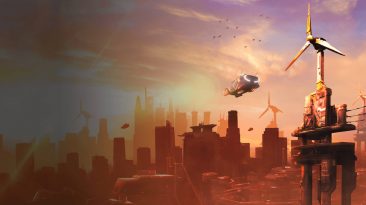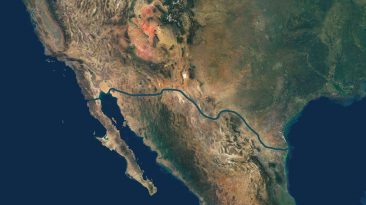Imagine having the ability to live forever, travel anywhere in the universe, and harness enough power to create wormholes. Well, if you’re part of the ultra-exclusive Type III civilization club, these are just some of the everyday luxuries available.
So, how could feeble Earthlings get to this level of power? But more importantly, should we even try? How would our lives transform as a Type III civilization? Would technology work for us or against us? What would it take to get to a Type IV Civilization?
On the Kardashev scale, which measures a civilization’s technological ability to harness energy, we’re still stuck at Type 0. To graduate to Type I, we’d have to take full advantage of all of the Earth’s energy and any energy that comes our way, such as sunlight. According to physicist Michio Kaku, we’ll get there in a century or two.
But to get to Type II, where we harness the energy of our sun, Dr. Kaku estimates we’re a few thousand years away. Which is, frankly, pretty optimistic.To reach Type III, where a civilization harnesses the power of its entire galaxy, Michio estimates we’re looking at anywhere from 100,000 to 1,000,000 years. So if we managed to fast forward one million years, what would our lives look like?
With the ability to harness nearly limitless energy from any planet or star within sight, we could live anywhere we wanted. Maybe we could build an even better Earth or an entirely new solar system from scratch. Looking for a tropical beach planet? It’s all yours. Or how about a Mushroom Planet? Sure, we can do that.
Earth, Mars, and every planet in our Solar System might just be husks at this point. We would have mined them of all their resources to build Dyson swarms.
No, no, I’m not talking about a swarm of fancy vacuums, but millions of energy collecting satellites that could swarm around a star and turn it into one big battery. But to truly become a Type III civilization, we’d need SWARMS of Dyson swarms, collecting an unfathomable amount of energy from all of the stars in our entire galaxy.
At this point, humans would have harnessed biotechnology to its fullest, and we would likely become a race of cyborgs so advanced we’d be indiscernible from robots. Our new favorite dance move might be The Human. Over the past decade, we’ve already developed electrode implants that allow amputees the ability to control artificial limbs with their brains.
We have brain implants that allow us to hear and perceive color. And Elon Musk is working on melding AI with the human brain with his company, Neuralink. Just imagine where this techno-evolution will take us in a million years. To survive warp speed travel, we may very well have to modify our flesh and bone bodies into something more resilient.
This is all wishful thinking, though. As AI improves exponentially, robots will rapidly outsmart and outnumber humans. They might consider us to be too useless, whiny, and, well, obsolete. If we’re lucky, they’ll keep us around as pets or wildlife. Or we may have to start acting more like them, ridding ourselves of any emotion or moral conscience.
At this point, AI would be self-replicating on an exponential scale and could strip a planet with little remorse for whatever creatures live there. I’m sorry, guys, but you all know our slogan, “we are the Borg, and resistance is futile.”
With almost limitless resources as a Type III civilization, we would have enough power to harness Planck energy, the energy of space-time. Physics at this level would be vastly different from what we know today. According to Einstein’s Theory of Relativity, our ability to travel faster than light is impossible. But at the Planck-scale, we could build a wormhole to get around.
As a Type III civilization, we would not need resource management with almost an infinite energy supply. At this point, we’d be god-like with enough biotech to make us immortal and nearly indestructible. If anything stood in our way, well, we could snap our fingers and call it a day.
Over time, we would eventually exhaust our entire galaxy’s resources. In this case, we’d need to advance to become a Type IV or V civilization to explore and harvest energy from the rest of the universe. Without a resource limit as a Type IV civilization, we’d have no reason to value the universe around us beyond our own technological gains.
In other words, we’d get pretty bored, like getting 100% completion in your favorite video game on the most challenging setting. Don’t worry. We’ve got a lot more in store before the robots take over. As always, that’s a story for another What If.
Sources
- “The Kardashev Scale – Can We Advance Beyond A Type 3 Civilization?“.Creighton, Jolene. 2014. Futurism.
- “Could We Build A Dyson Sphere?“. 2020. Popular Mechanics.
- “The Real Reasons Nothing Can Ever Go Faster Than Light“.Baraniuk, Chris. 2021. Bbc.Com.
- “Type III Galactic Societies Apparently Don’t Exist“. Wired.Sterling, Bruce. 2016.
- “Can We Create Wormholes?“. 2020. Medium.
- “The Planck Scale“. 2021. Symmetry Magazine.
- “Classifying Civilisations: An Introduction To The Kardashev Scale“.Lovell, Christopher. 2016. Astrobites.
- “When Will We Be A Type III Civilization?“. 2021. Phys.Org.



















uwu